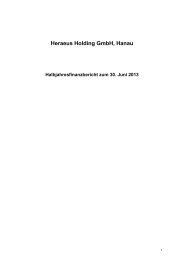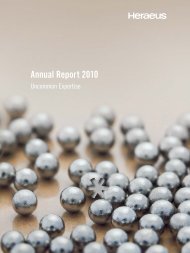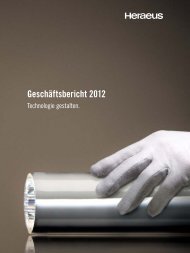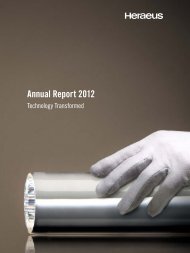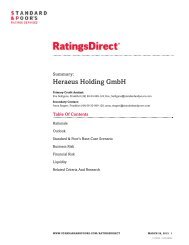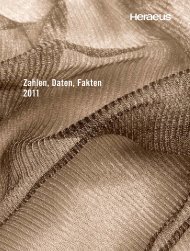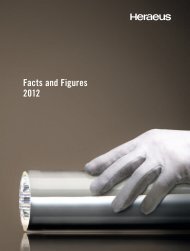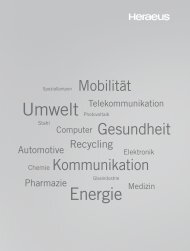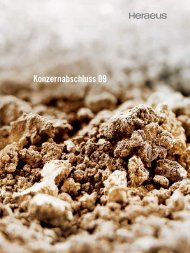english - About Heraeus
english - About Heraeus
english - About Heraeus
You also want an ePaper? Increase the reach of your titles
YUMPU automatically turns print PDFs into web optimized ePapers that Google loves.
In connection with the capitalization of internally generated intangible assets, a basic distinction<br />
is made between research and development costs. Research costs are recognized<br />
as expenses in the income statement as incurred; development costs for future products<br />
or technologies are capitalized if the recognition criteria according to IAS 38 are cumulatively<br />
met. If the requirements for capitalization are not met, the expenses are recognized<br />
in the income statement in the year of their origin.<br />
Property, plant, and equipment<br />
The items of property, plant, and equipment are recognized at cost.<br />
The acquisition costs cover the purchase price including the directly attributable costs<br />
that are incurred in order make the asset ready for operation within its intended usage.<br />
In addition to individual costs (production material and wages), the costs of conversion for<br />
internally generated assets also include appropriate parts of the material and production<br />
overheads incurred in production (including depreciations). Borrowing costs are generally<br />
capitalized if the criteria for a qualifying asset are met. An asset qualifies for capitalization<br />
of borrowing costs if the manufacturing process lasts in excess of a period of twelve<br />
months. Financing costs that can be allocated directly are capitalized in full and financing<br />
volume that cannot be allocated directly are capitalized proportionately.<br />
Grants, subsidies, or similar public sector grants-in-aid are deducted from the cost of the<br />
item.<br />
The items of property, plant, and equipment are usually depreciated using the straight-line<br />
method based on the economic useful life of the asset. Useful lives and depreciation<br />
methods for property, plant, and equipment are reviewed periodically to ensure that depreciation<br />
methods and periods reflect the expected economic benefit of the assets. Depreciation<br />
is primarily based on the following useful lives:<br />
19




